The Intel Haswell Refresh Review: Core i7-4790, i5-4690 and i3-4360 Tested
by Ian Cutress on May 11, 2014 3:01 AM ESTSynthetic IGP Benchmarks
OpenCL – CompuBench: link
CompuBench is an OpenCL and RenderScript benchmark designed by Kishonti for both CPUs and any GPGPU capable device. While it offers almost two dozen tests, we select the more real-world tests in terms of fluid simulation and image analysis benchmarks and test on the CPU and IGP respectively. The CPU results are earlier in the review, and the IGP results are below.
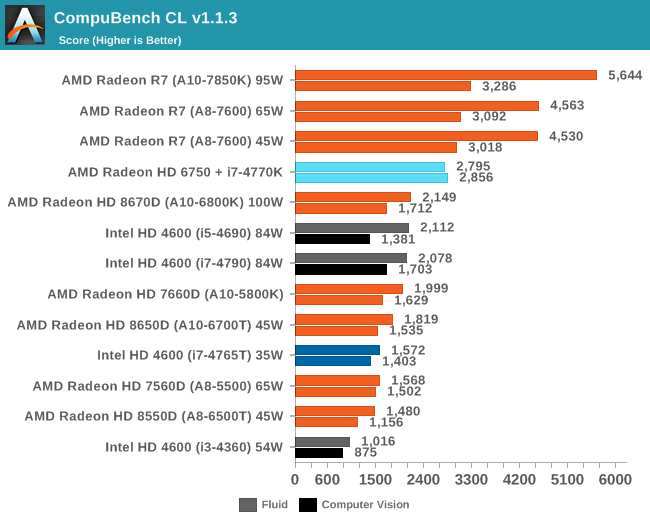
CompuBench responds well to actual cores, but not so much to threads, given by the close scores of the i5 and i7 CPUs. AMD still wins here.
Unity – Graphic Scene 720p: link
As part of my IGP testing I went searching for a couple of new Unity based benchmarks to help decipher the line between the desktop graphics solutions and those that are not so great. First up is a graphical humdinger, implementing a complex scene with lighting effects (including fluid simulation, shadows, SSAO, Bloom). We run the benchmark at 720p with the highest graphical settings, reporting the average FPS.
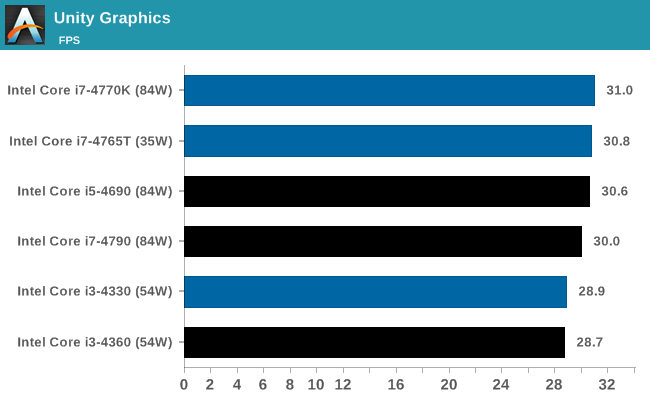
The HD 4600 seems relatively CPU agnostic for complex graphics in Unity. More GPU power seems needed.
Unity – Draw Calls: link
Next up is a benchmark limited by draw calls rather than rendering complexity. The scene generates simple Nintendo Gamecube polygons that fall due to gravity and bounce around until stationary. The scene continuously spews out these polygons until three consecutive frames fall under a 20 FPS average. We run the benchmark at 720p at simple graphic settings to minimize the graphical complexity, take the number of consoles that spawn from each run and average over several runs.
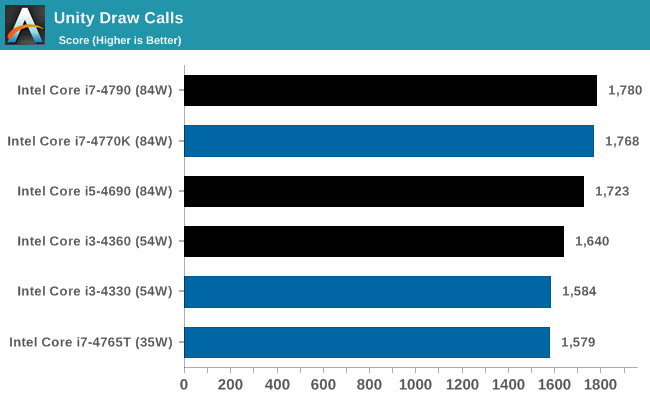
3DMark
The synthetic tools from Futuremark have been on the benchmarking landscape for over a decade, with each generation designed to tackle new problems as either the CPUs or GPUs become too powerful. Here we test 3DMark 06, 3DMark 11 (Performance) and the latest 3DMark.
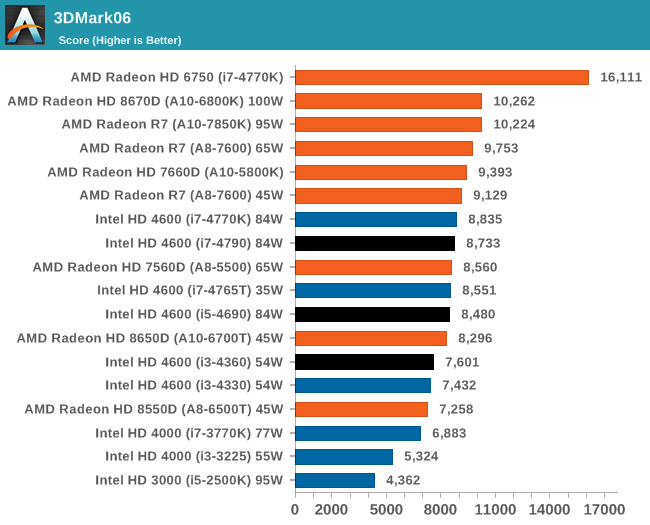
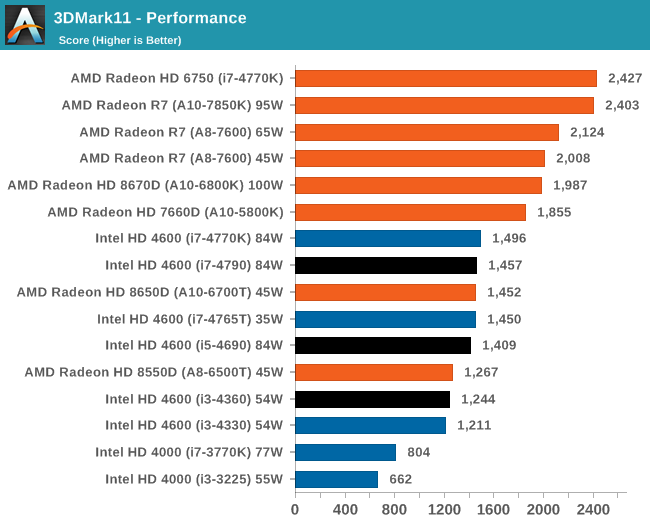
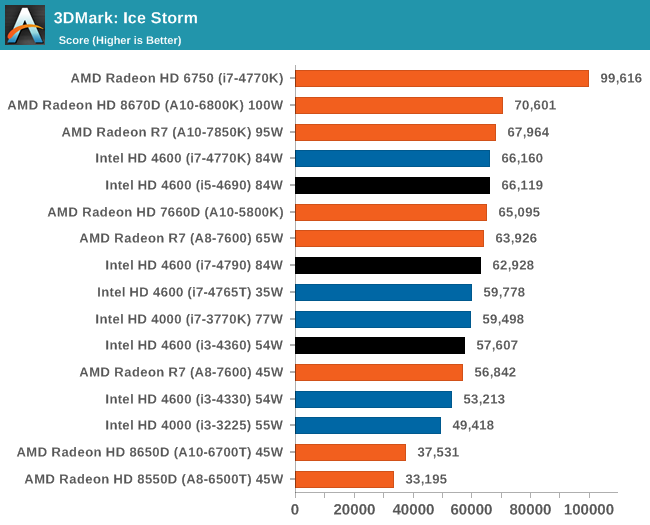
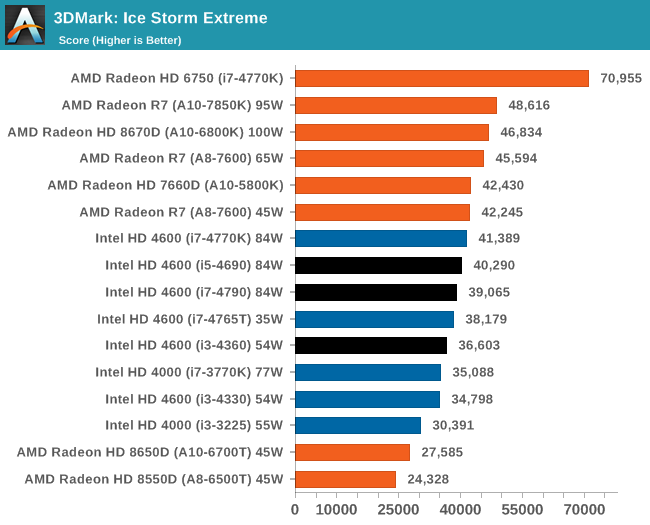
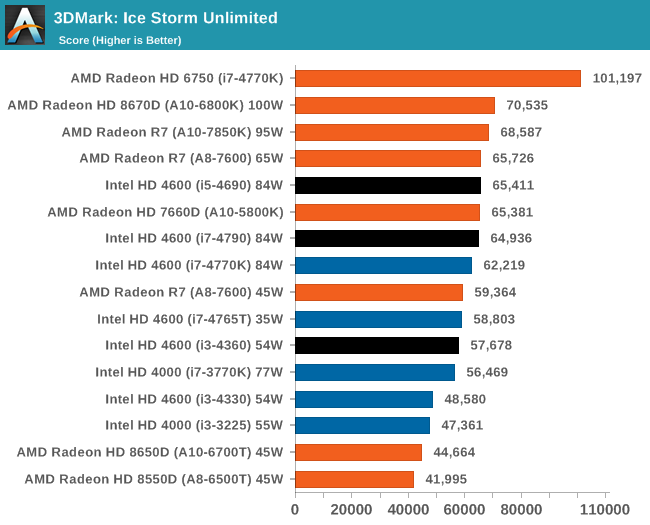

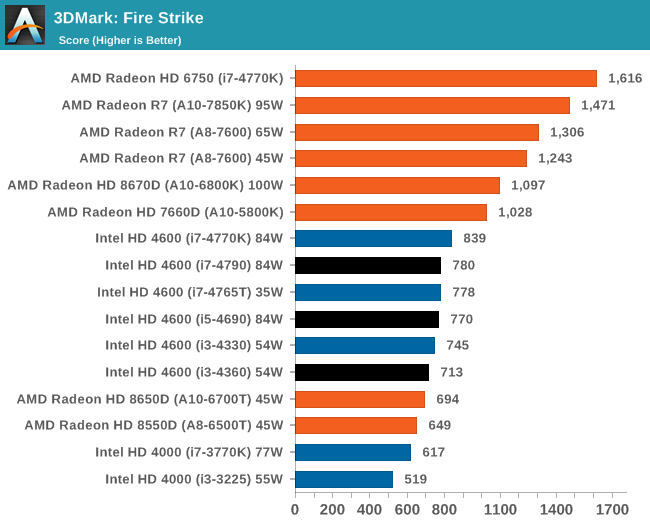
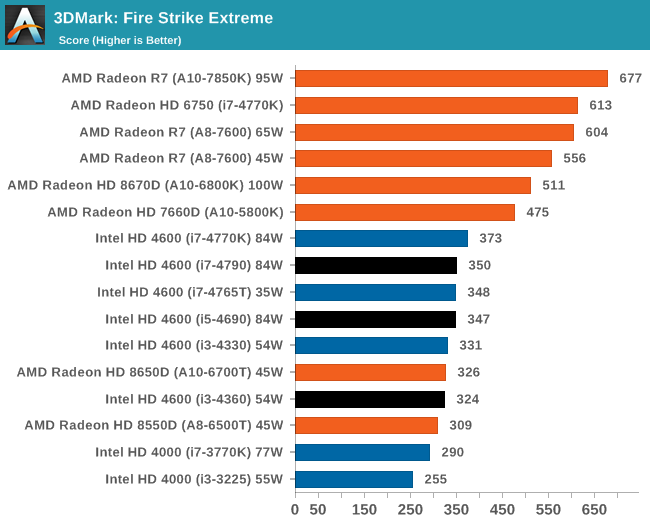
For CPU limited testing, such as Cloud Gate, the Intel i7 pulls ahead with the i5 quickly in tow. For the others, AMD has the lead.
Tessmark
The latest version of TessMark is designed to focus on tessellation via OpenGL 4. We run the latest version of the benchmark using the high resolution map set at maximum tessellation while 1080p full screen, reporting the average FPS.
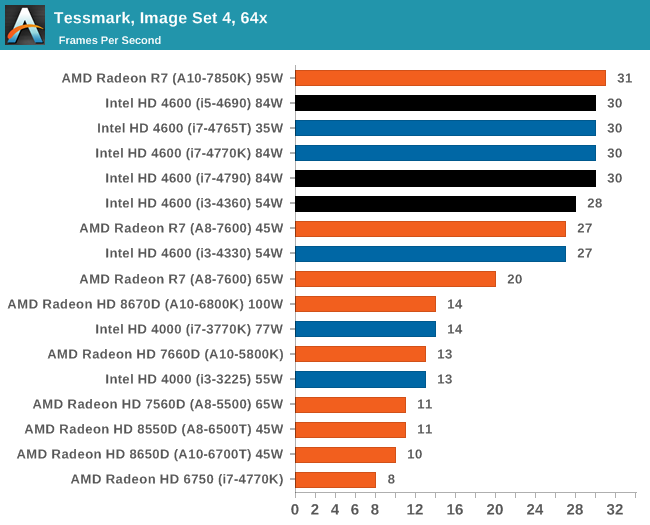










130 Comments
View All Comments
willis936 - Sunday, May 11, 2014 - link
Man why are you reading anantech if you think redundant data collection is a waste of time? Verification of both results and of expectations in new products is valuable. Intel could call it a refresh after botching every wafer in the past six months and dump it into a new product line.DanNeely - Sunday, May 11, 2014 - link
This is the locked, non OC, portion of the Haswell refresh. The new unlocked chips have a rumored ETA of early next month.If you're not interested; go read something else instead. What you want isn't available yet.
Flunk - Monday, May 12, 2014 - link
Proving there is no credible difference is useful, maybe it will save some people a few bucks.nutjob2 - Sunday, May 11, 2014 - link
Intel is chasing a dying market, ie, those who are willing to pay for single threaded performance at any cost, and worry less about power consumption, in the desktop and server space.These people fall into two broad categories:
First there are gamers with more money than sense who spend hundreds or thousands each year on the latest CPU/motherboard/GPU that delivers a 5%-10% increase in framerate. Also other people who feel they need the latest and greatest for whatever reason.
On these people Intel dumps their hottest parts since they're not very concerned about power consumption, water cooling is a badge of honor for these guys.
Then there are the corporates who are visited by HP/Dell/etc salesmen and are told they need big, big iron so they can virtualise all their servers to "save money". That of course means they've created a single point of failure for all those servers so they need a machine with redundant everything and huge density. No-one has the heart to tell them they still have a single point of failure.
These people don't so much care about power consumption than the fact you can't cool or deliver power very well to multiple processors in a box, so Intel give them their somewhat cooler parts. Because most of the software they run is not very clever and largely single threaded they stick to Intel.
The smart corporate money is not buying any of Intel's overpriced CPUs instead they're sticking with their existing hardware and waiting for "cloud" providers to lower their prices. Why are they doing that? Because Intel is playing most of the above market for suckers, making them pay through the nose while they sell their best parts to Amazon, Google, Microsoft, IBM et all who pay a fraction of what everyone pays. Intel doesn't do this out of the kindness of their hearts but because they know that cloud providers will eventually replace many of their existing direct customers and because they don't care about single threaded performance (they're almost always using all their cores). Intel are milking their cash cows while they kiss up to the new big players, lest they start getting too friendly with AMD or ARM vendors who can make custom parts for them, just like the big players make their own motherboards, etc shutting out people like HP and Dell.
willis936 - Sunday, May 11, 2014 - link
Adding an extra 20 to product numbers is "chasing"?betam4x - Sunday, May 11, 2014 - link
Regarding your comments:1) Gamers don't spend 'hundreds of thousands of dollars every year' on PC components. Top of the line PC hardware can be had for under 3 grand. Typically the users who buy this years new hardware are the ones that skipped the past 1-2 generations of hardware.
2) Intel's parts aren't 'hot'. They are more power efficient than they've ever been. The performance per watt is among the highest in the industry.
3) Virtualizing does save money. Even if that server went up in flames, a backup of that VM is stored elsewhere so that it can be quickly brought back up on the backup server located in another rack. This means minutes of downtime instead of hours.
4) At my company we buy intel CPUs every day. We upgrade all of our machines every 3 years and often have to buy new machines for new employees. Of course, we do other 'crazy' things as well, like dual monitors, ample workspace, etc. Imagine that?
Gigaplex - Monday, May 12, 2014 - link
"Gamers don't spend 'hundreds of thousands of dollars every year' on PC components."They said hundreds OR thousands, not "of".
rajod1 - Friday, May 30, 2014 - link
Gamers as a group spend millions on upgrades not hundreds or thousands.maximumGPU - Tuesday, May 13, 2014 - link
Upgrade every 3 years, and new machines for new employees? I'd like to apply to a job in your company, tired of XP and pentium 4's in my current one.YuLeven - Wednesday, May 14, 2014 - link
Know that feel. I use a Celeron D here.